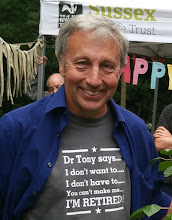As 2014 draws to a close it might be nice to look back and see what we've done over the past year. What was 2014 like and what were some of our major projects?
The Sussex Wildlife Trust
carries out a wide range of work in many different areas so it is impossible to
cover everything in a short blog. However,
perhaps it is worth highlighting just a few projects – with apologies to all
those I miss out!
We will never achieve any
nature conservation if people do not care for nature. So the starting point for all our work is to inspire,
educate and motivate people about nature.
Our Wildlife Rangers and
Youth Rangers are good examples of how we connect young people (from ages 12 to
25) with nature. In this programme they
can get their hands dirty learning conservation skills and work as volunteers
to help improve local green spaces. In a
similar vein our Forest Schools programmes have been extremely valuable linking
children with nature through bush craft type activities and at the very young
end of the spectrum our Nature Tots events hope to spark a very early interest,
maybe with mum or dad in tow as well.
We work with local
communities around Sussex ,
with the help of funding from a range of partners. The Gatwick Greenspace project had its 20th
anniversary this year, a project that is only possible because of support form
Local Authorities and Gatwick
Airport Hastings Worthing ) has enabled us
to move forward there and a charitable trust has enabled us to link with
communities in Lewes as well. In
addition, projects with intriguing names like “Growing Forward”, “Nature Train”
and “Wellbeing in the Wild” have all been supported by funds from unusual
sources in order to engage with different groups of people. The key point in all these is the linking of
people to nature, doing activities to enhance nature and in the process gaining
all sorts of personal benefits.
We also have several large
landscape-scale projects, improving nature further out in the wilds of Sussex .
Our West Weald Landscape
project, part funded by a charitable trust, celebrated its 5th
anniversary this year in a major event at Kew Gardens England
Starting off as a project
with a focus on otters, our current wetlands projects aim to achieve habitat
enhancements at a landscape scale. The
Arun and Rother Connections project and the Sussex Flow Initiative are examples
of how we are looking at whole river catchments in order to achieve
improvements for nature. A recent
change, however, has been an increasing recognition that if we improve a
catchment for wildlife then it is also likely to improve it for all sorts of
public benefits as well (flood risk reduction, soil erosion reduction, improved
water resources and so on).
We
may forget that about 50% of our wildlife (numbers of species) is actually under
the sea. Our “Making Waves” project is therefore
active in engaging with children to encourage them to
find out about marine wildlife. Activities include “Wild Beach
I am very enthused by the range of work we do and the wildlife
conservation activities we deliver but we must bear a sad truth in mind. The general trend for nature in England
